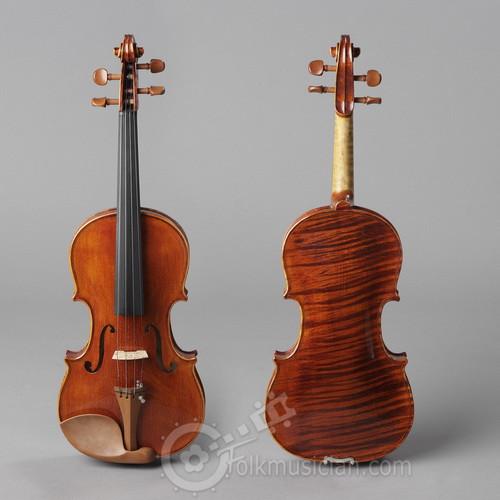Violin Woods
The Woods:When we are looking at the woods, we are really interested in the grade of wood used. Violins should always use the traditional types of wood. If it doesn’t, do not consider it as an option.
A maker that plans to build a high-end violin will spend a great deal of money on the wood used. Spending $1000 or more on the wood to make a single violin is not unheard of. If a maker will spend a month or more of his life on a single instrument, it does not make sense to use low quality wood. He will want the best, as will the buyer that eventually purchases the violin.
What determines a good piece of wood and how does this affect the final violin?
First.. a violin should always be carved from solid wood. The top should be spruce. The back and neck should be maple. The neck should be maple. Even the lowest grade instruments will almost always use these same woods.
The Fittings:
The fittings are an area where wood type does matter. You will find different types of wood used. Fittings refer to the various parts that attach to the violin. Tuning pegs, chinrest, tailpiece, end pin and the fingerboard are all fittings. The traditional wood for violin fittings is ebony. This is the black colored wood that the vast majority of violins use.
Fingerboards should always be ebony. Ideally the rest of the fittings will be ebony or boxwood. You often find alloy tailpieces with built in fine tuners. This is a good choice for most violins.
Flamed wood is sought after by makers and players alike. This is strictly cosmetic but adds so much to the appearance of the violin. Flamed wood is sometimes referred to as quilted. It looks like rolling waves when moved in the light. The shapes change when you view from different angles.
The best woods for the top are from high altitude cold climates where the trees grow slowly. This produces a dense grain that is ideal for violins. The best trees for violins are over 200 years old and cut in winter months.
Green wood should not be used for instruments. This leads to the drying process. The best woods are stored for many years. A general rule is, the older the wood the better. 20+ year old wood will be getting near its peak.
Wood can also be kiln dried. This is how the vast majority of wood for violins is now produced.
A violin resonates the vibrations of the strings. The quality of the wood will be the first thing that leads to a good sounding instrument. Aged, dry wood will produce much better tone. Wood that has too much moisture left in it is also prone to warp.
Leave a comment
Comments will be approved before showing up.
Also in Fiddle-Violin

Where are Cremona Violins Made?
Cremona Violins are made in China. Cremona was one of the first major brands to be imported to the USA from Asia. They have become a favorite among teachers and students, due to their value.

